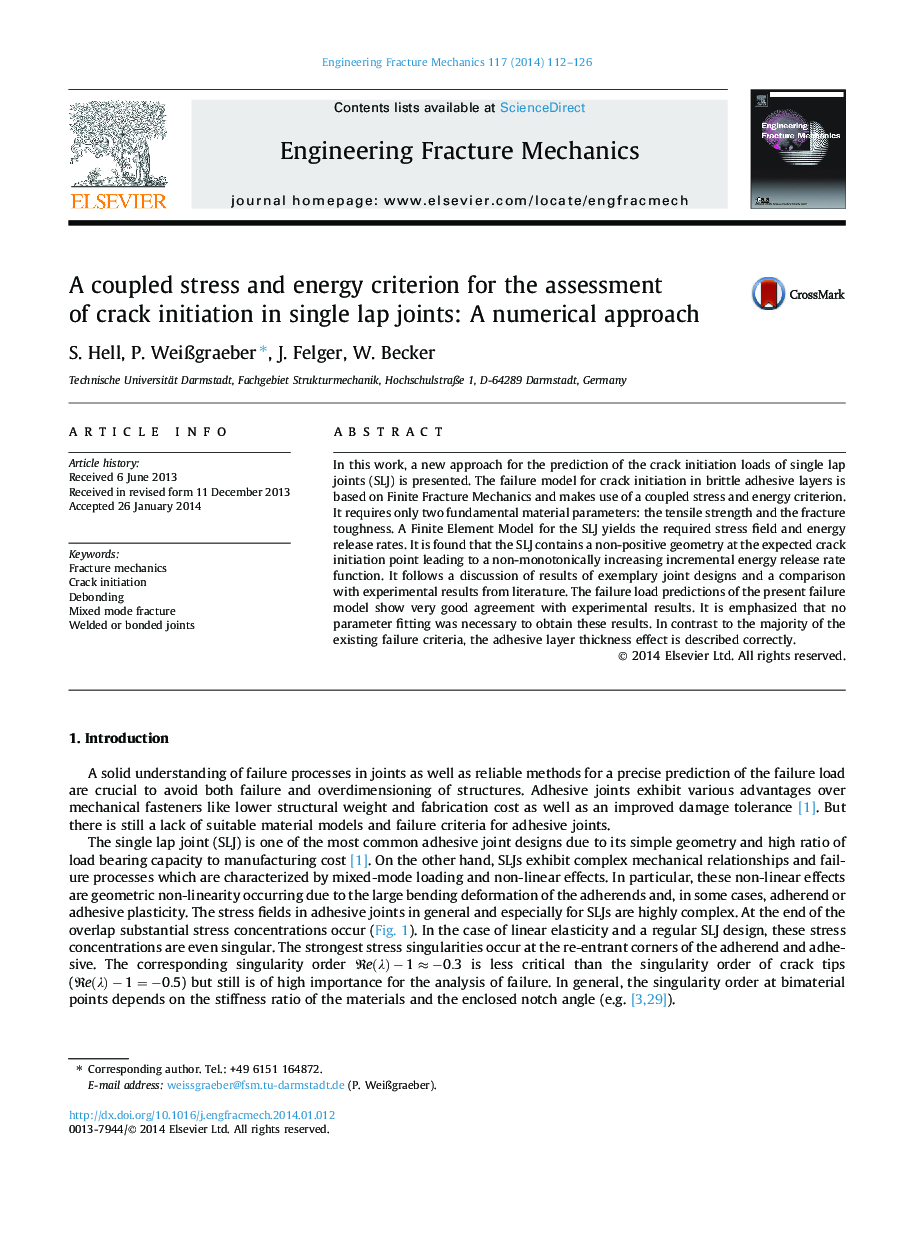| کد مقاله | کد نشریه | سال انتشار | مقاله انگلیسی | نسخه تمام متن |
|---|---|---|---|---|
| 766970 | 1463109 | 2014 | 15 صفحه PDF | دانلود رایگان |
• Crack initiation in adhesive joints is analyzed.
• A coupled stress and energy criterion in the framework of Finite Fracture Mechanics is employed.
• Underlying numerical joint model reveals non-monotonic energy release rate functions.
• Comparison to experimental results shows good agreement.
• Adhesive thickness effect is reproduced correctly.
In this work, a new approach for the prediction of the crack initiation loads of single lap joints (SLJ) is presented. The failure model for crack initiation in brittle adhesive layers is based on Finite Fracture Mechanics and makes use of a coupled stress and energy criterion. It requires only two fundamental material parameters: the tensile strength and the fracture toughness. A Finite Element Model for the SLJ yields the required stress field and energy release rates. It is found that the SLJ contains a non-positive geometry at the expected crack initiation point leading to a non-monotonically increasing incremental energy release rate function. It follows a discussion of results of exemplary joint designs and a comparison with experimental results from literature. The failure load predictions of the present failure model show very good agreement with experimental results. It is emphasized that no parameter fitting was necessary to obtain these results. In contrast to the majority of the existing failure criteria, the adhesive layer thickness effect is described correctly.
Journal: Engineering Fracture Mechanics - Volume 117, February 2014, Pages 112–126
